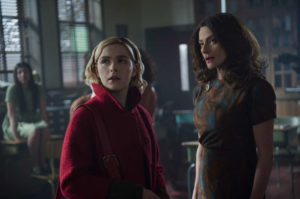Audiobooks are the current gold rush in publishing””or so they say, and you know “they” always know what they’re talking about. If you don’t get on the audiobook wagon, you are sure to lose out.
That might or might not be true. But one thing that is true, without a doubt, is that listening to a book narrated aloud is an experience unlike that of silently reading text. An audiobook can make or break a book for the listener. In the hands of a poor narrator, any book can be crushed. But in the hands of a skilled narrator, even humdrum text can take flight, and sparkling text can soar. The latter is an experience you might want to serve up to your readers. But if your publisher isn’t doing it, or you’re an indie writer and are your own publisher (I’ve been in both positions), how do you make it happen?
 I’ve spent much of the last year getting some of my best work into audiobook, and I won’t kid you””it’s not easy. But you can do it. The landscape of audio publishing has changed quite a bit in the dozen or so years since my agent placed nine of my books with Audible, the 400-pound gorilla in the business. For that process, I didn’t have much to do beyond providing the text, except offer pronunciation guidance to the (Audible-chosen) narrators who asked. What I got from the deal was a mixed bag: some recordings I could be truly proud of, and others that made me wince.
I’ve spent much of the last year getting some of my best work into audiobook, and I won’t kid you””it’s not easy. But you can do it. The landscape of audio publishing has changed quite a bit in the dozen or so years since my agent placed nine of my books with Audible, the 400-pound gorilla in the business. For that process, I didn’t have much to do beyond providing the text, except offer pronunciation guidance to the (Audible-chosen) narrators who asked. What I got from the deal was a mixed bag: some recordings I could be truly proud of, and others that made me wince.
As it happened, my best-known books were not part of that deal, because of the audiobook rights being held by my print publisher (who was not exercising them). It took years to get those rights reverted, and when the reversion came, it was just in time to miss a window of opportunity to get the books into Audible. Curses! Rotten luck!
Or… maybe not. Eventually, my failure to land The Chaos Chronicles at Audible (with a narrator chosen by them), led me to approach a narrator whose work I loved and admired””Stefan Rudnicki, a Grammy and Hugo-winning artist, whose natural voice is somewhere down in the frequency range of James Earl Jones’, and just as captivating.
Stefan liked the book I pitched to him, Neptune Crossing, and he secured a deal to have it recorded by him and published through Blackstone Audio. He did a great job, and Blackstone got it out in great shape, and all was grand. Except… it didn’t sell. Not very well, anyway. It’s a terrific audiobook (in my opinion), but it was the first and only book in the series. Who wants to buy the first book and find that there are no more? Approximately nobody, apparently.
Blackstone, discouraged by the sales, didn’t want to fund the rest of the series. I was on my own if I wanted the books that I considered some of my best work turned into audiobooks. Stefan was eager and willing. Stefan is also a top-tier narrator who works with a top-flight director and top-notch engineers. I could pay Stefan out of my own pocket, and the rights would be mine forever. My books tend to be long. The cost for finished recordings clocked out at around $4000-6000, per book. Eeek. It seemed impossible.
 However, fortune seems to favor the foolish, because some unexpected funds came to me that made it possible to pay for books 2-4 in the series. And around the time those were finished, some different unexpected funds came in that enabled me to contract for Books 5-6, my recently published The Reefs of Time and Crucible of Time. I had spent eleven years writing these books, and after a career of working with traditional publishing, found myself without a publisher””and put them out myself, as my first self-published originals. They meant a lot to me. And so I made the choice””not an easy choice, mind you””to take some money that I might have used for other purposes, and invested it in having my books recorded.
However, fortune seems to favor the foolish, because some unexpected funds came to me that made it possible to pay for books 2-4 in the series. And around the time those were finished, some different unexpected funds came in that enabled me to contract for Books 5-6, my recently published The Reefs of Time and Crucible of Time. I had spent eleven years writing these books, and after a career of working with traditional publishing, found myself without a publisher””and put them out myself, as my first self-published originals. They meant a lot to me. And so I made the choice””not an easy choice, mind you””to take some money that I might have used for other purposes, and invested it in having my books recorded.
That point bears repeating: the money was an investment in the future. An investment for my readers to have new ways to discover my story, and an investment in future earnings, even if the time to recoup my costs is measured in years.
Great, I can hear you thinking. How does this help me? Well, you might not have the particular good fortune of money coming just when you need it. But there are other ways to fund these projects. You might crowd-source the expense. You might find a narrator who’s newer and charges less, or is willing to record for a share of the royalties. The two major audiobook self-publishing platforms both offer ways to do this. There are avenues.
And that brings us to the second big question: Even if you get your audiobook recorded, how do you get it before an audience? You may already know that ACX.com and FindawayVoices.com are the two big players. But which do you want to work with, and why?
How about both?
I started out by leaning toward Findaway, mainly because they distribute to more than 40 stores, including Apple, Audible, Amazon, Google, Kobo, Nook, Overdrive (library sales!), and many more. ACX distributes to just Audible, Amazon, and Apple. Add to that Findaway’s 80% of net royalty rate, versus ACX’s 40% (if you go exclusive), and it seems like a no-brainer.
But maybe not. If you distribute through Findaway to ACX (which is how they distribute to Audible and Amazon), you only get 80% of the reduced nonexclusive royalty of 25% from ACX. For many people, Audible, Amazon, and Apple are where most of the sales come from, so that might not seem like such a good deal.
Personally, I lean strongly toward wider distribution, both for philosophical reasons and practicality. (I don’t want Amazon to control everything, and I don’t want to put all my eggs in one basket.)Â So I went with Findaway for maximum distribution.
Uploading to Findaway is a pretty straightforward, if finicky, procedure. You learn right away if a chapter file flunks some fiddling technical specification. So you know when you’ve nailed it, and your book starts showing up pretty quickly, at least in stores like Apple, Nook, and the other big outlets.
But all was not rosy with the Audible/ACX distribution. The “ingesting” process is slowwww. Where things started going wrong was when it turned out that ACX has more exacting standards””not in quality, but in finicky attributes such as the exact amount of silence (room tone) at the beginning of a chapter, or the precise length of a sample. Two or three months can go by before you learn that your book failed acceptance at Audible. That’s a long time when you’re trying to rev up interest in a new book.
I finally came around to this: Submit your book to both places. At ACX, choose nonexclusive distribution. At Findaway, exclude Audible and Amazon from your distribution. It’s more work, but you get the widest possible distribution, you’ll be up at Audible much faster, and the royalty rate is better. You’ll also get a better reading of where your books are selling.
Support at ACX, in my experience, has generally been quite good. At Findaway it has ranged from meh to excellent.
Since last fall, I’ve released three books in audiobook format: Strange Attractors, The Infinite Sea, and Sunborn. Books 5-6, The Reefs of Time and Crucible of Time, are being prepared for fall 2020 release.
Has it brought me riches of sapphire and gold? What do you think? (The correct answer is no.) It’s a marathon, not a sprint. I don’t know when I’ll break even, so in that respect as in many others, this is a labor of love. But it’s also a way to more richly present my stories to the widest possible audience. A way for folks in their cars, or at the gym, or walking their dogs to discover my work. It’s an investment in every conceivable meaning of the word. So, yes””a labor of love. But one that I hope will pay dividends for a long time down the galactic road.
 JEFFREY A. CARVER has been writing character-driven hard science fiction/space opera since the 1970s and is still hard at it. His novel Eternity’s End was a finalist for the Nebula Award, and his Star Rigger novels and ongoing series The Chaos Chronicles have gained a wide and appreciative audience. Battlestar Galactica fans will enjoy his official novelization of the 2003 BSG Miniseries. Last year he published an epic two-volume novel, The Reefs of Time and Crucible of Time, which are widely available in ebook and print, and will be out in audiobook in the fall of 2020.
JEFFREY A. CARVER has been writing character-driven hard science fiction/space opera since the 1970s and is still hard at it. His novel Eternity’s End was a finalist for the Nebula Award, and his Star Rigger novels and ongoing series The Chaos Chronicles have gained a wide and appreciative audience. Battlestar Galactica fans will enjoy his official novelization of the 2003 BSG Miniseries. Last year he published an epic two-volume novel, The Reefs of Time and Crucible of Time, which are widely available in ebook and print, and will be out in audiobook in the fall of 2020.
You can read about his books at https://www.starrigger.net, where you can also subscribe to his blog and his occasional newsletter. Or you can find him on Facebook at https://www.facebook.com/jeffrey.a.carver.
If you’re an author or other fantasy and science fiction creative, and want to do a guest blog post, please check out the guest blog post guidelines. Or if you’re looking for community from other F&SF writers, sign up for the Rambo Academy for Wayward Writers Critclub!

















One Response